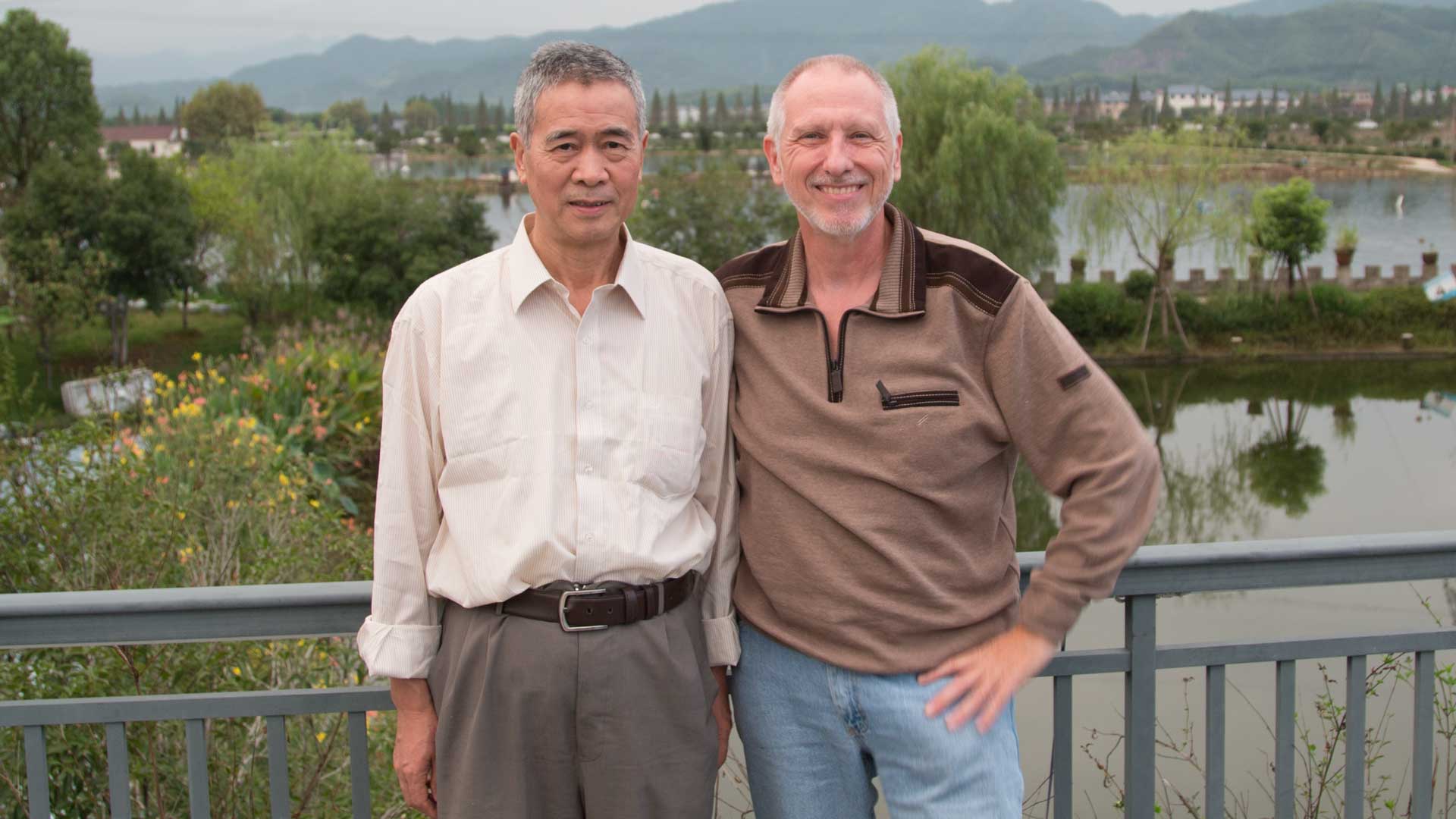The Giant Grottoes of Huang Shan
The giant grottoes of Huang Shan: Research report by Gregor Spörri
Huang Shan is a mountain range in the administrative area of the county-level city of Huangshan in Anhui Province in the south of the People’s Republic of China. Huang Shan covers an area of 154 km2. There are 72 peaks, the highest of which, the Lotus Blossom Peak, reaches 1864 m above sea level. The first historical records are a good 3000 years old. Records from the Han Dynasty state, among other things, that Taoists have been making pilgrimages to Huang Shan for at least 2,200 years to meditate on the mountain with the five peaks, which resembles the petals of an open flower.
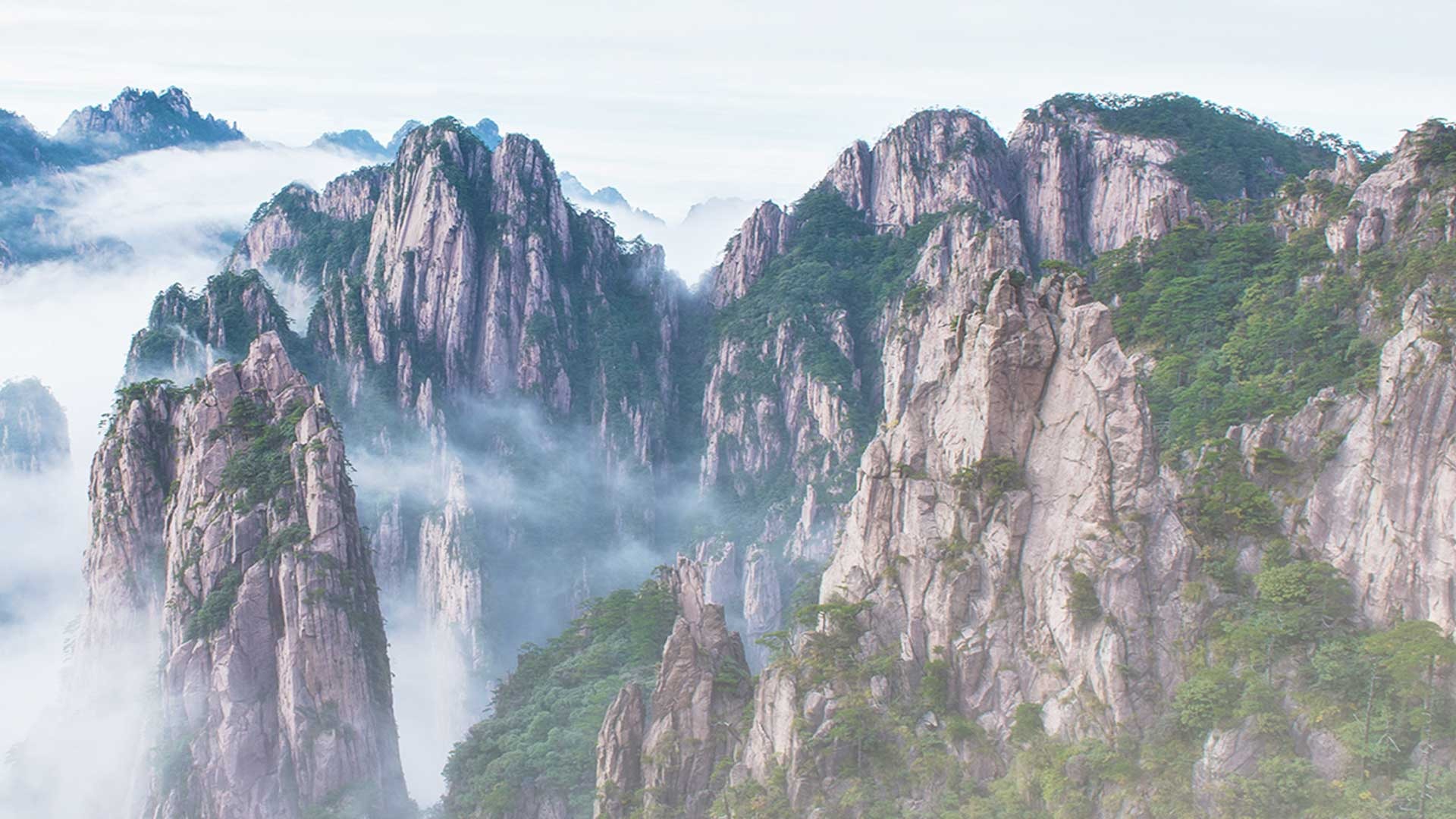

Mysterious underground facility
At the lower reaches of the Xin’an River, 12 kilometers from Huangshan City, an unknown civilization carved a huge, seven-square-kilometre underground complex out of the mountain a long time ago. The so-called “Blumenberg” is almost hollow inside due to the construction of this complex. Chinese researchers have so far located 36 caves. However, they suspect that there are more caves and believe that they could all be connected to each other.
When it was discovered in 1999, the entire cave system was completely under water. In the meantime, the entrance area of cave no. 24 can be navigated with small boats. Caves no. 2 and no. 35 were largely pumped empty, cleared of debris and mud and can now be visited. Although the Chinese diligently documented everything historical, there are no records of the mysterious caves. Nor have the locals developed any traditions or legends, as would have been expected with such a gigantic construction project.
In the province of Longyou, 100 kilometers from Huang Shan, numerous other caves of a similar design have been discovered. Apart from a single pumped-out facility protected by a dyke wall, they are also deeply submerged. Whether they can ever be explored is questionable, as pumping out the rock makes it unstable, which could cause the caves to collapse at any time.
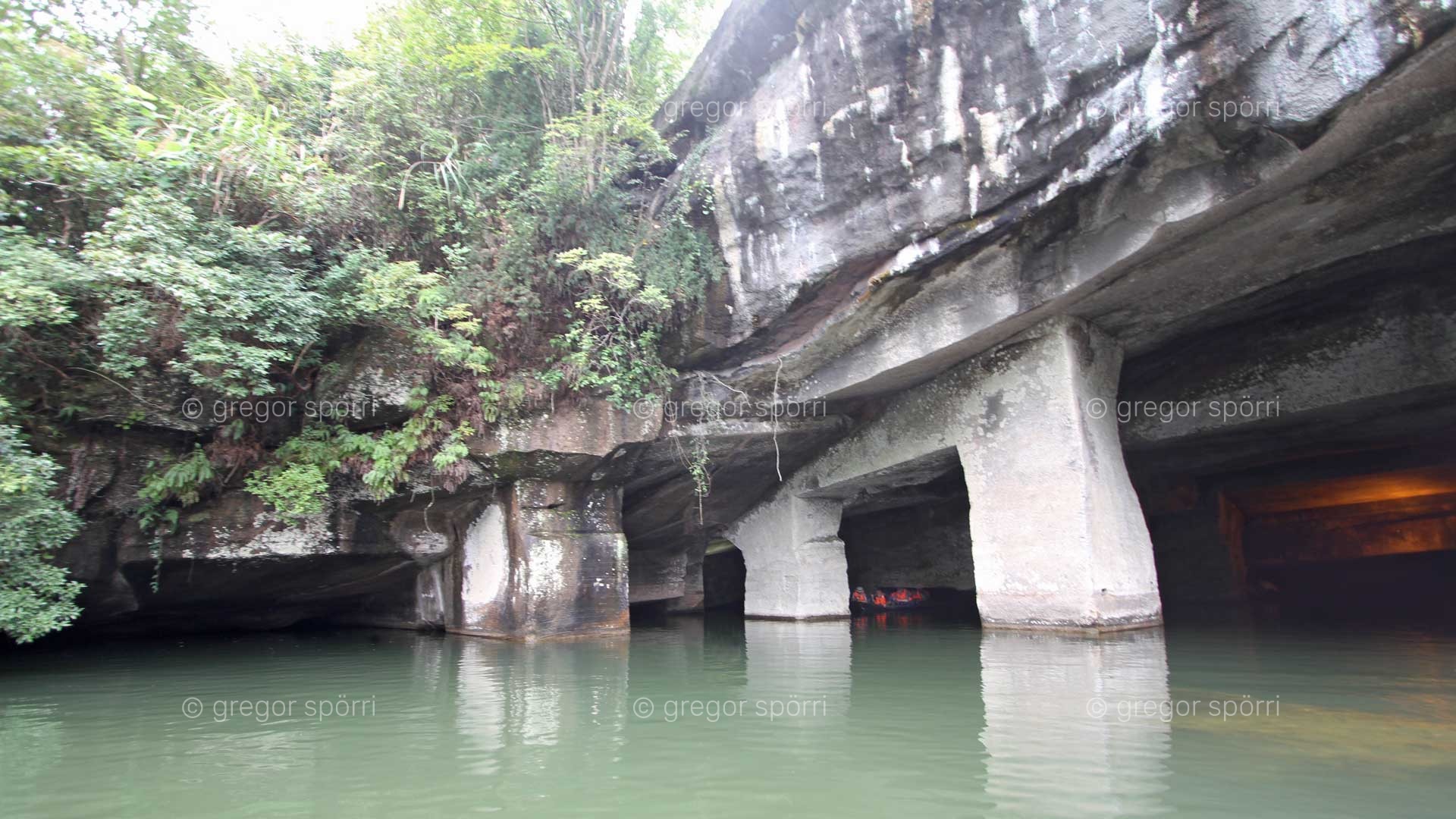

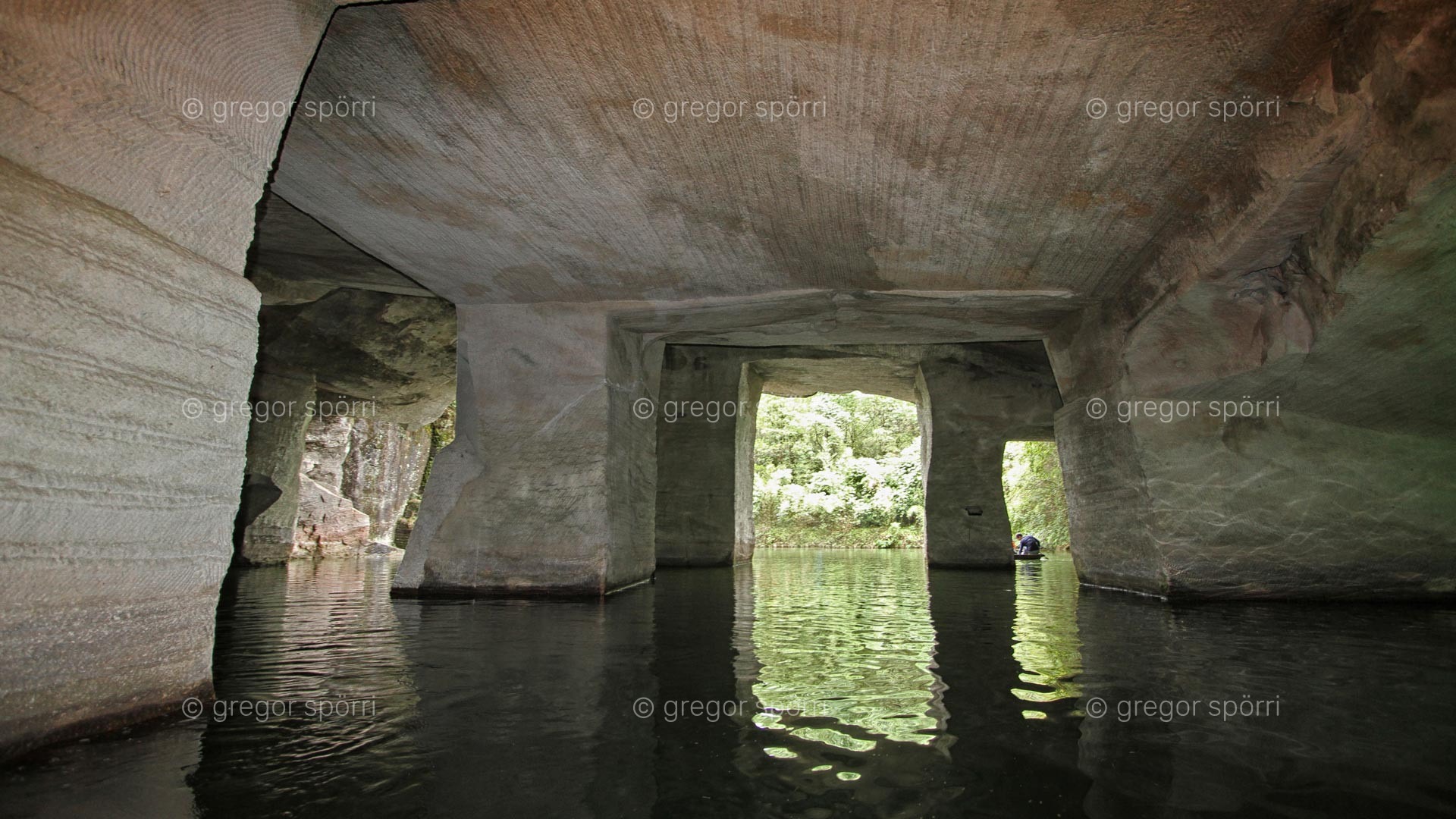
The grotto no. 35
Before the cave could be explored, 20,000 cubic meters of mud and rubble had to be removed from the mountain and over 18,000 tons of water had to be pumped out. Of the caves examined so far: No. 2, 24, 33, 34 and 35, the u-shaped No. 35 is the largest. It covers an area of 12,600 square meters. The deepest areas are still about two meters under water. The depth gradient within the system is an impressive 25 meters. The ceilings are supported by pillars measuring up to 4 × 9 meters and 18 meters high.
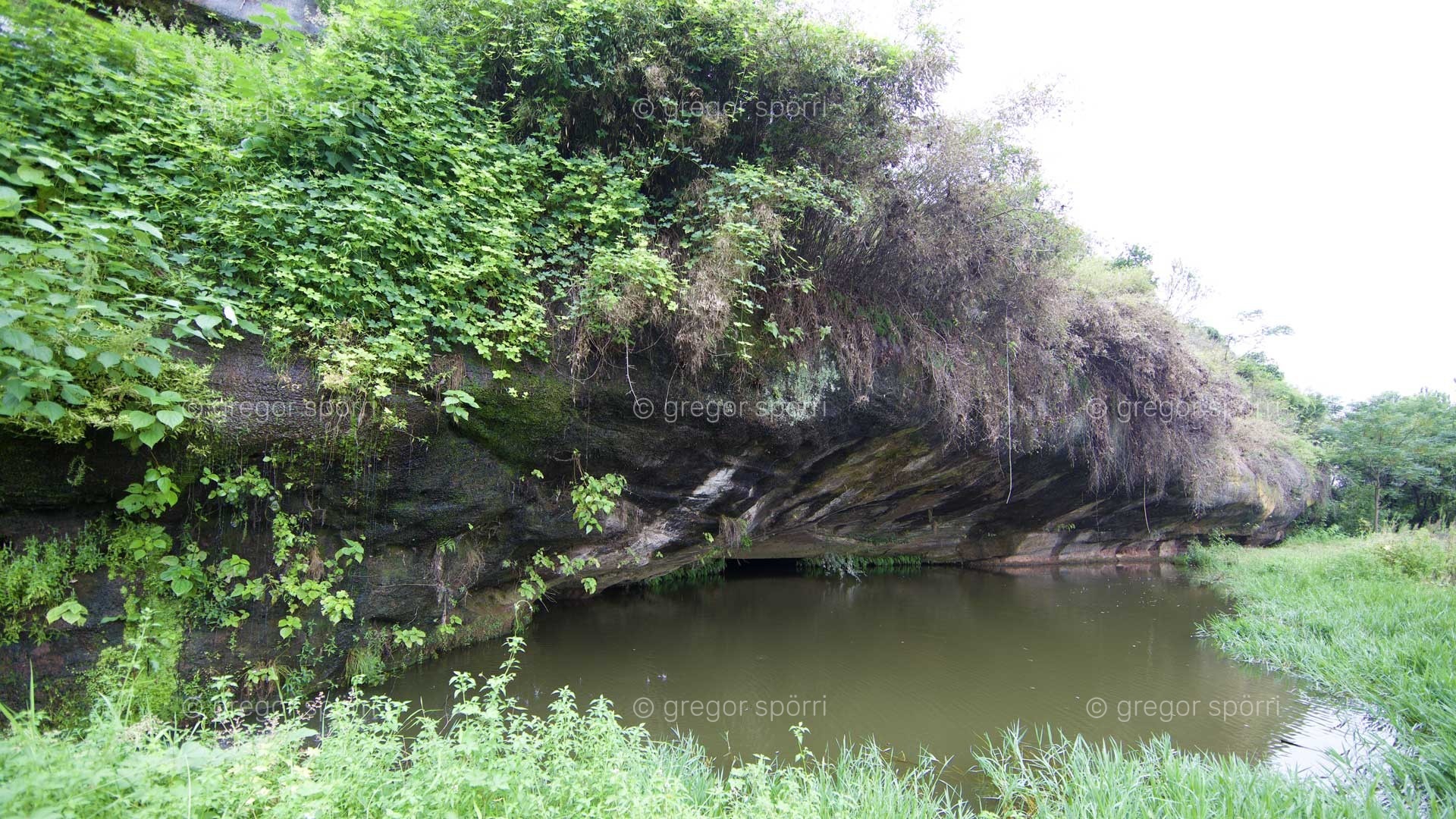
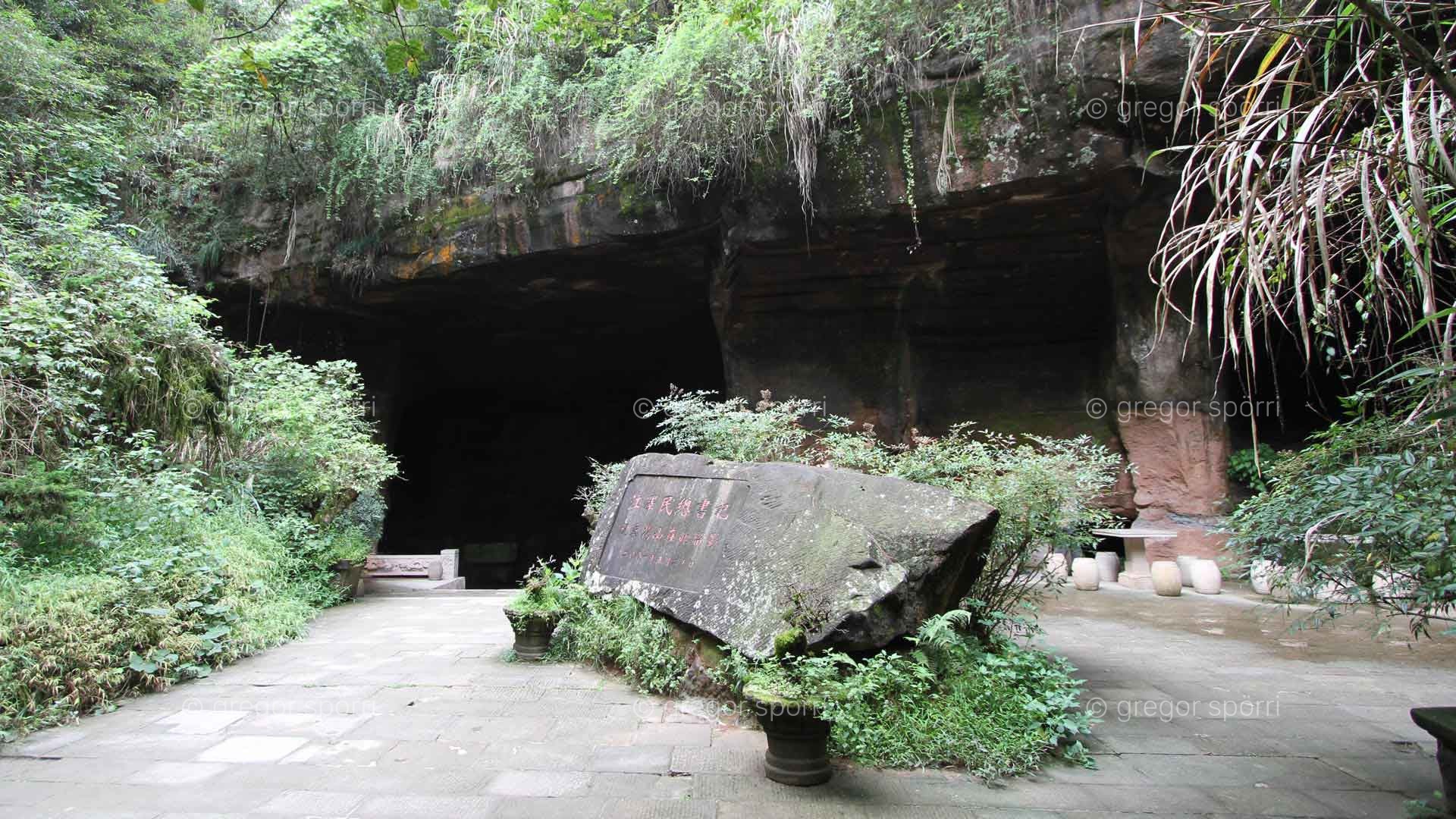
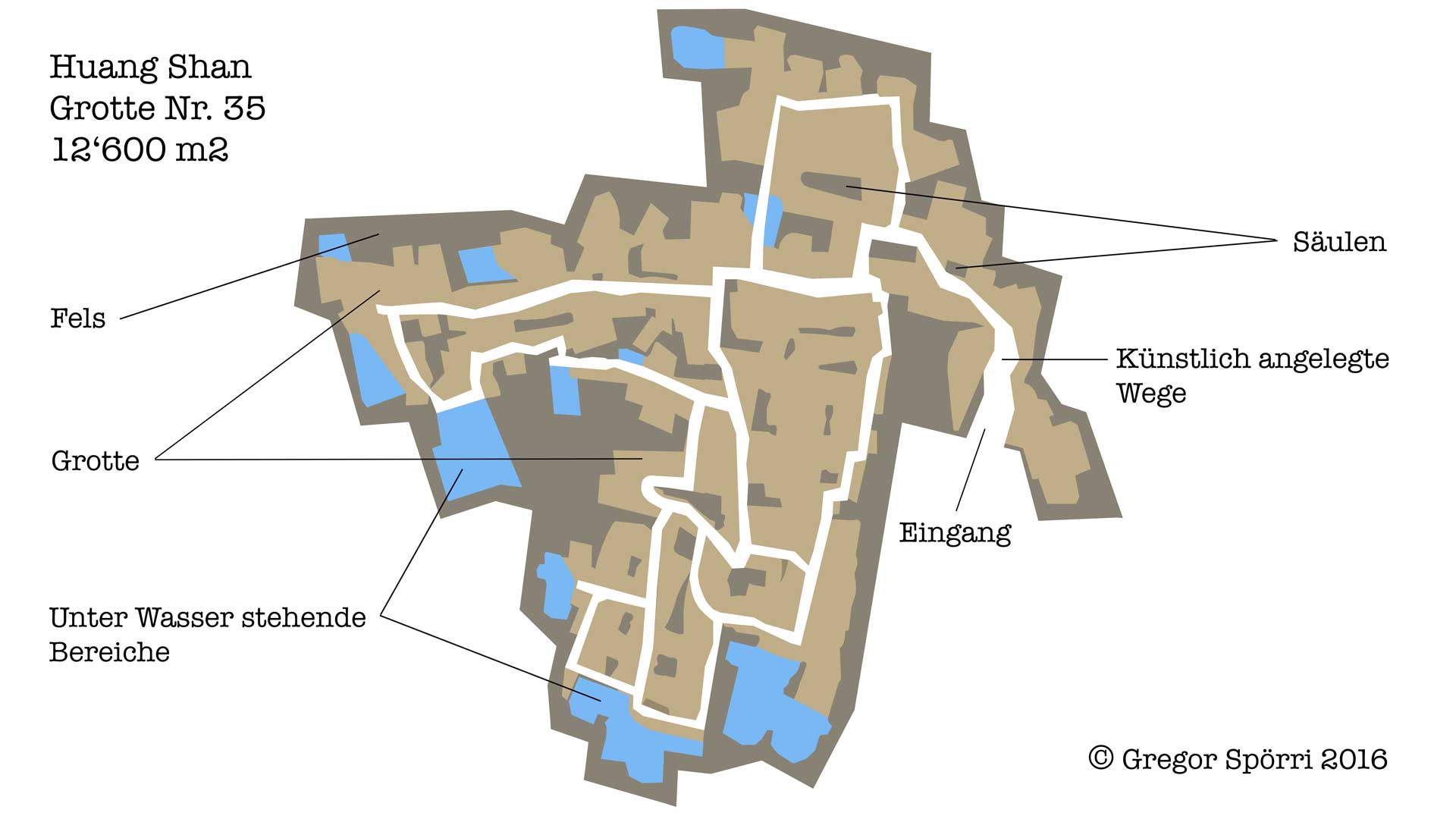
A completely different world
As soon as you enter the warm and humid grotto with its 36 rooms and halls, you feel transported to a completely different world. In some places, you feel like you’re walking through the set of a fantasy movie. Bizarrely shaped columns, pedestals, niches, bridges, pits and paths reveal enigmatic forms and structures that exist nowhere else in the world.
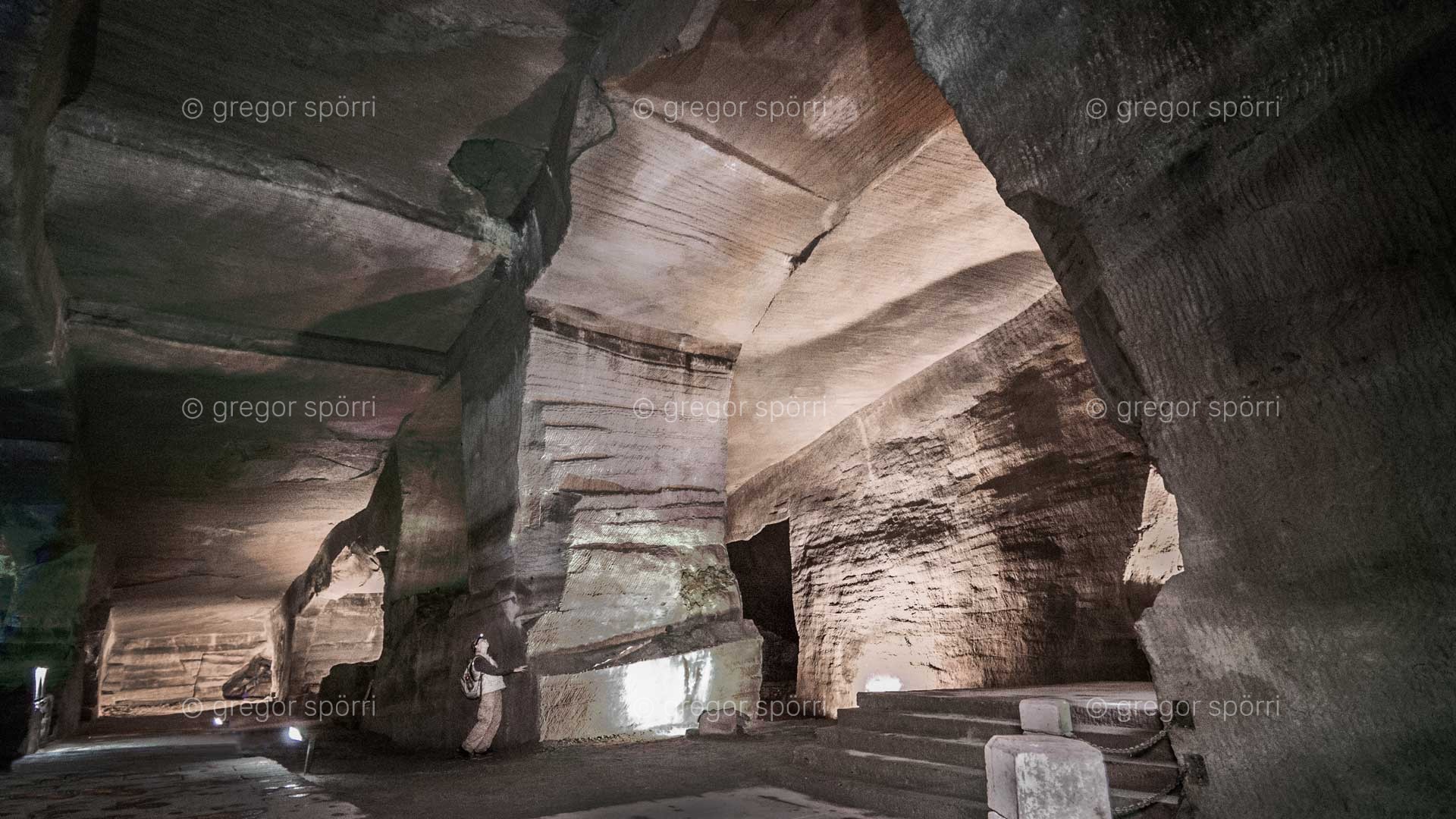

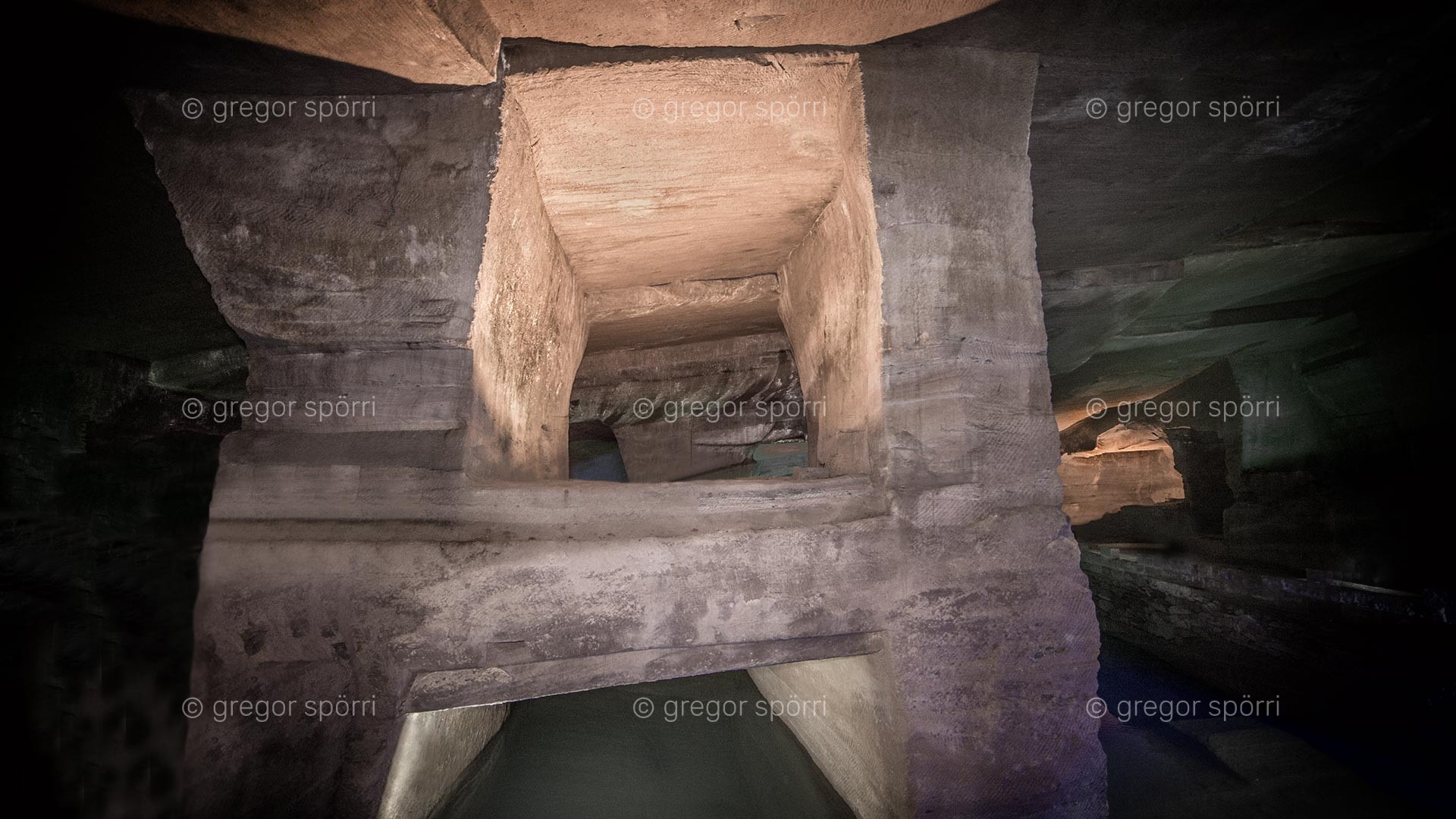
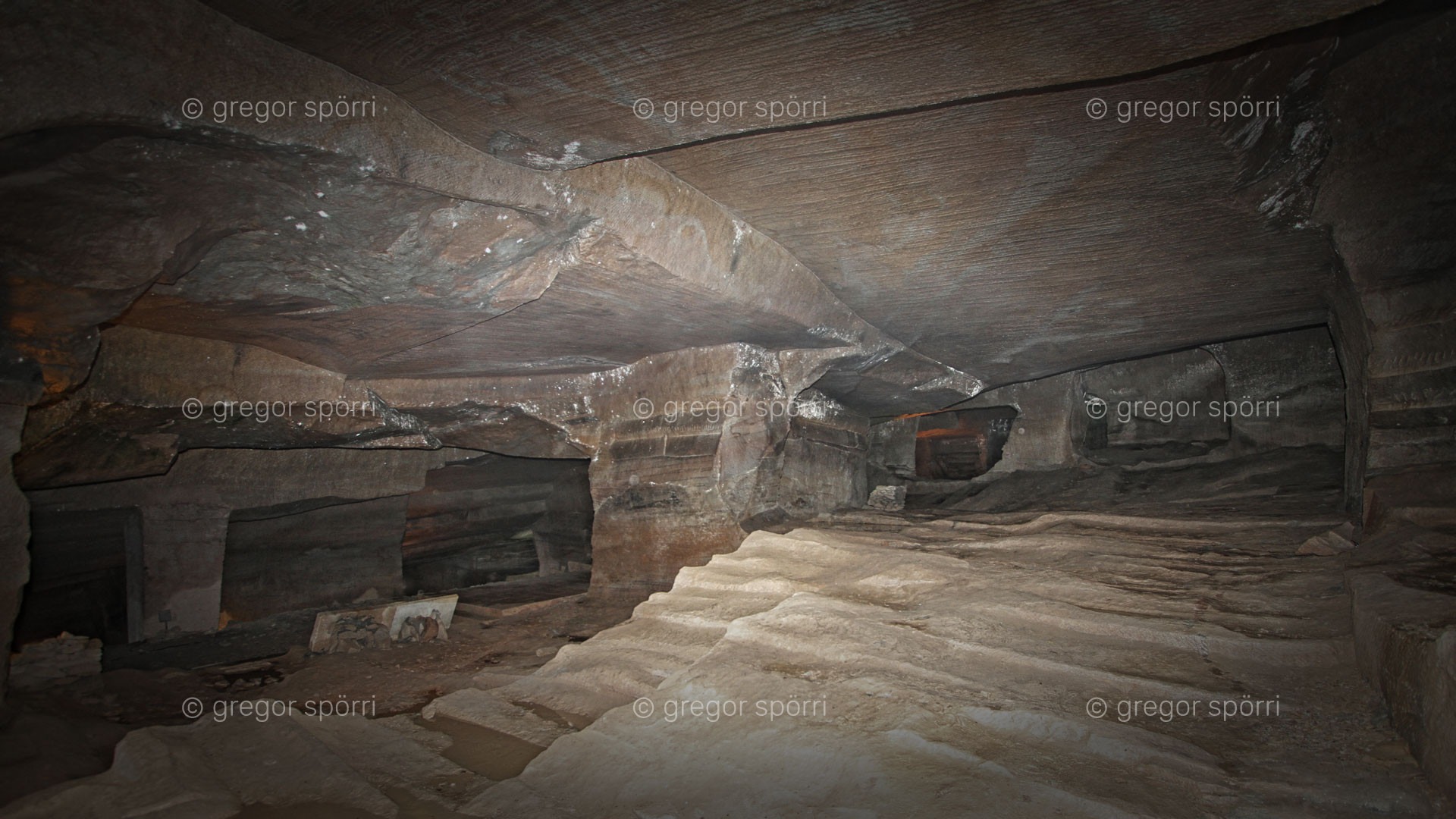
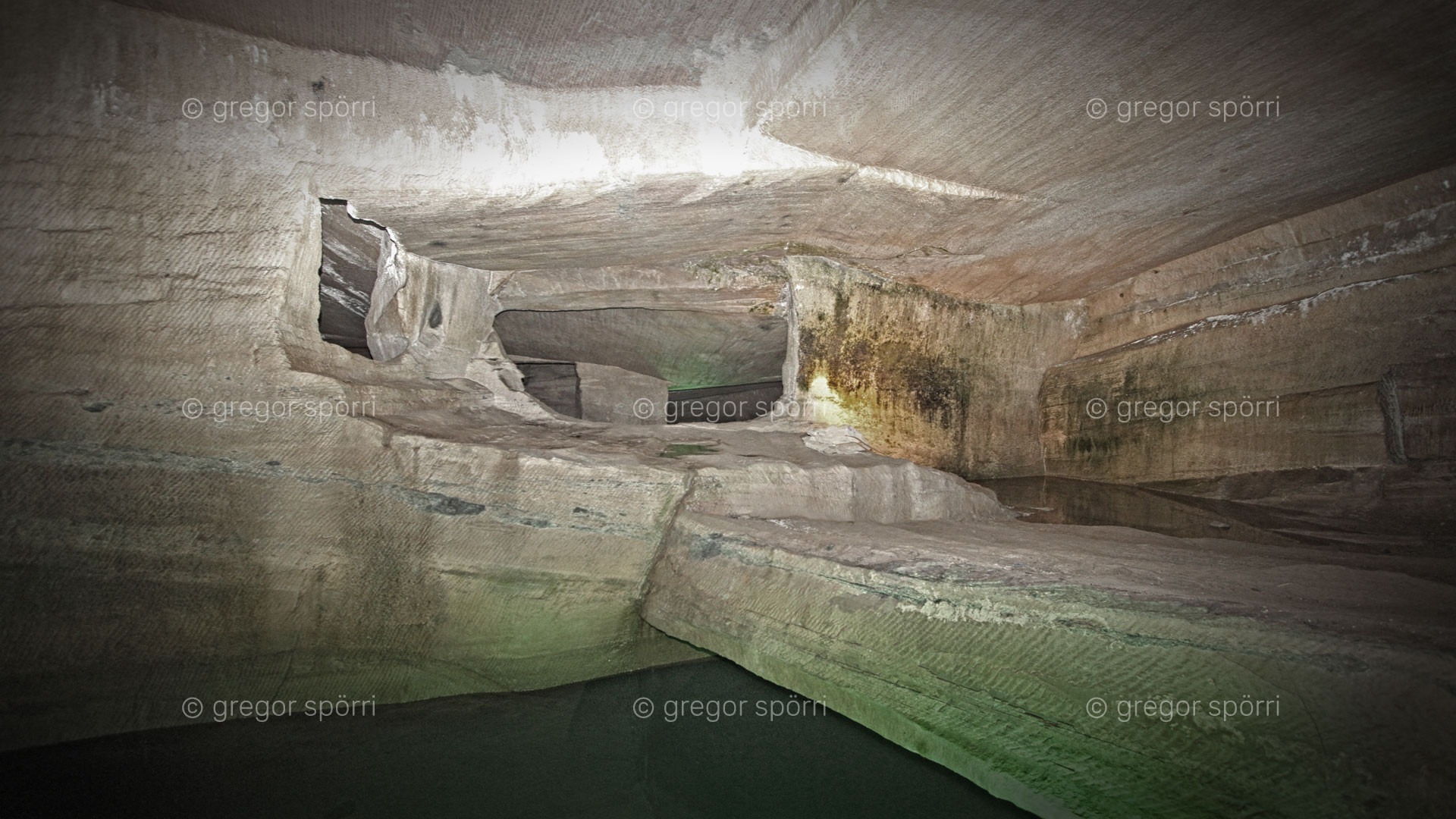
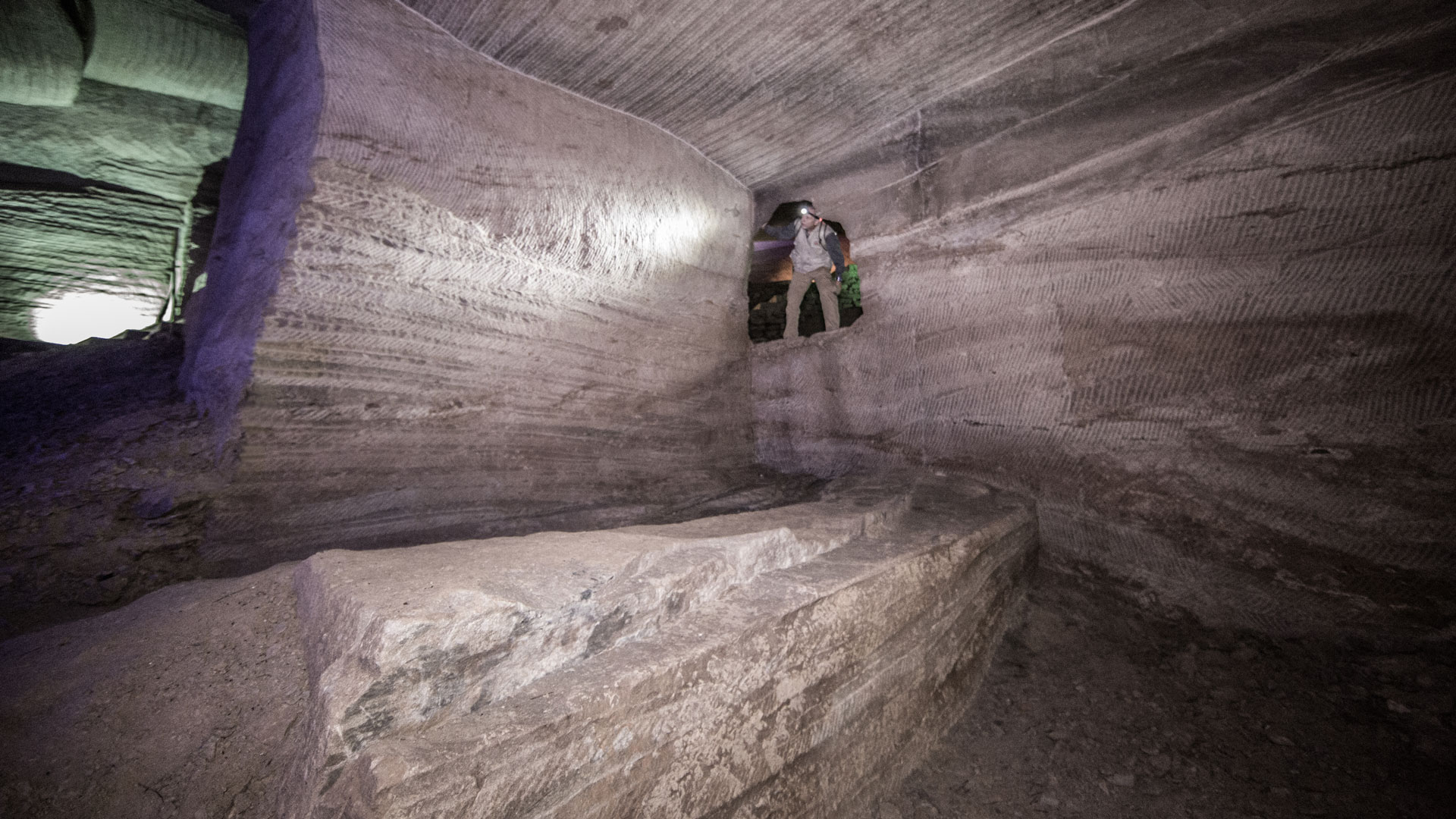

Did giants once inhabit this mountain?
My amazement grows, because nothing seems normal here. Grotto no. 2 and no. 35, for example, have numerous, extremely strange-looking, mighty pits, niches and stairs that seem to have been made more for giants than for normal people.
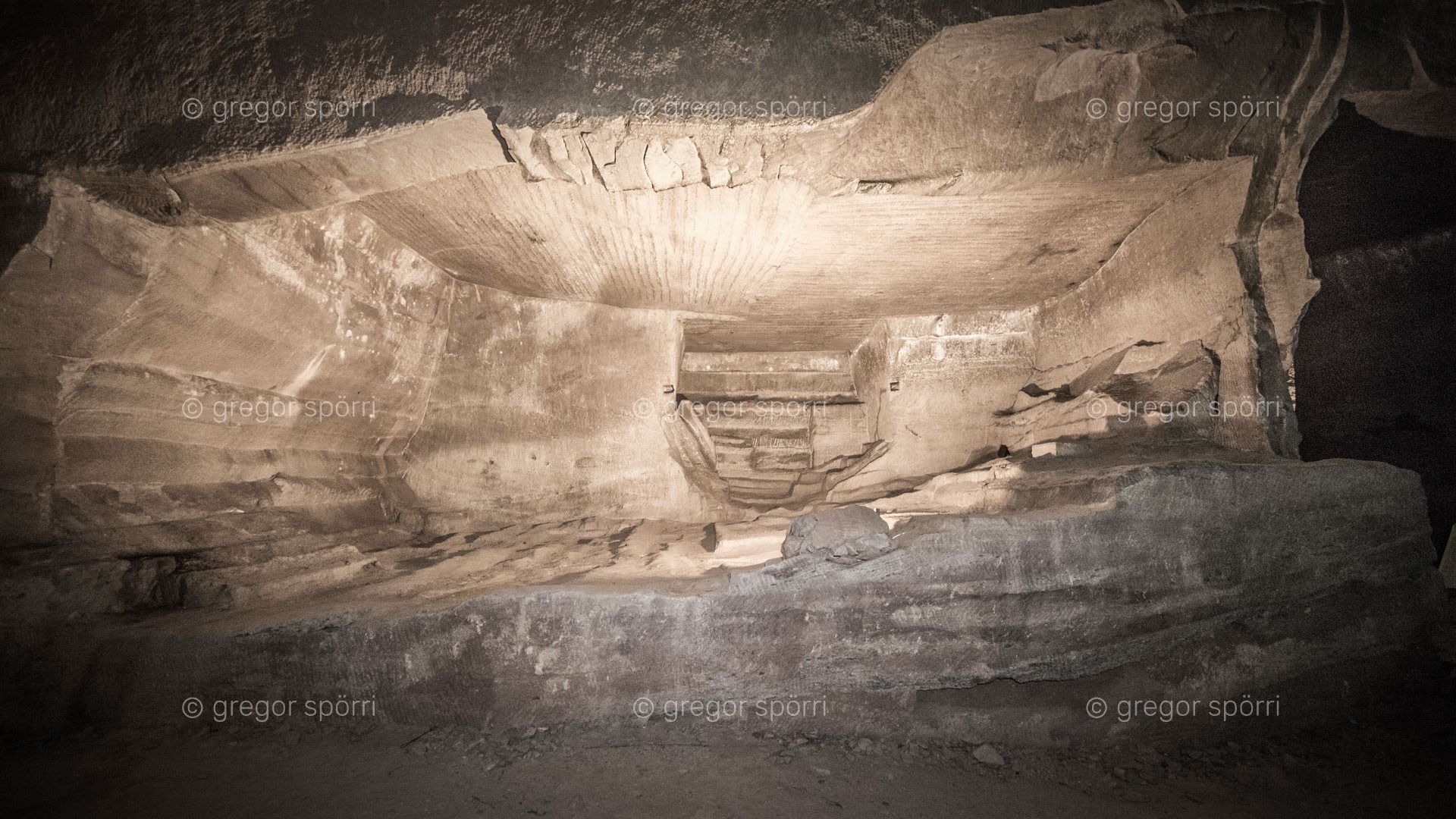
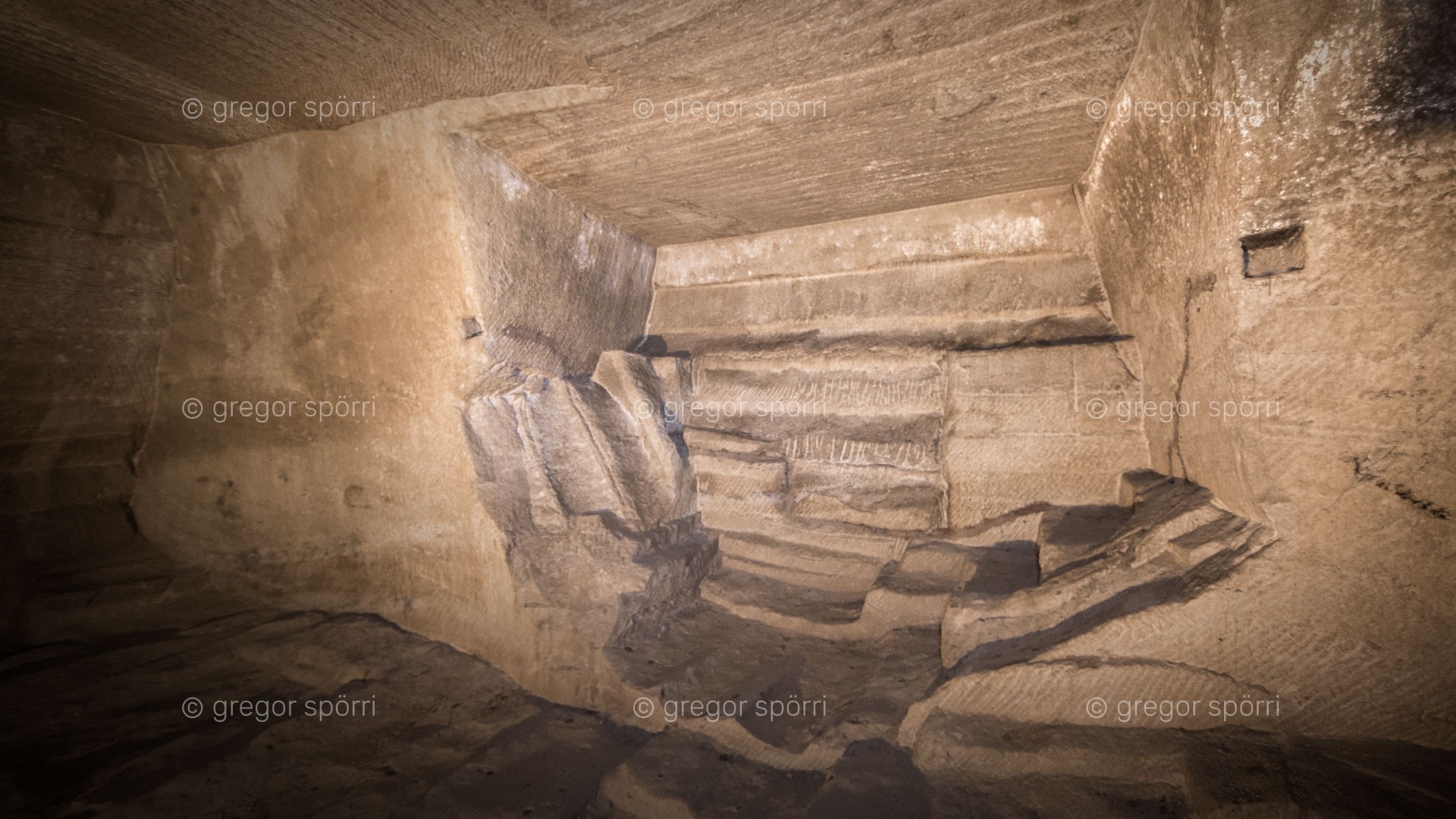


Extraterrestrial?
But the oversized, gigantic size is by no means everything. Because there is also this techno-like, almost extraterrestrial-looking design of walls, ceilings and pillars. Could primitive Stone Age people have “built” something like this? How were they supposed to do that? And why and what for? Nobody knows!

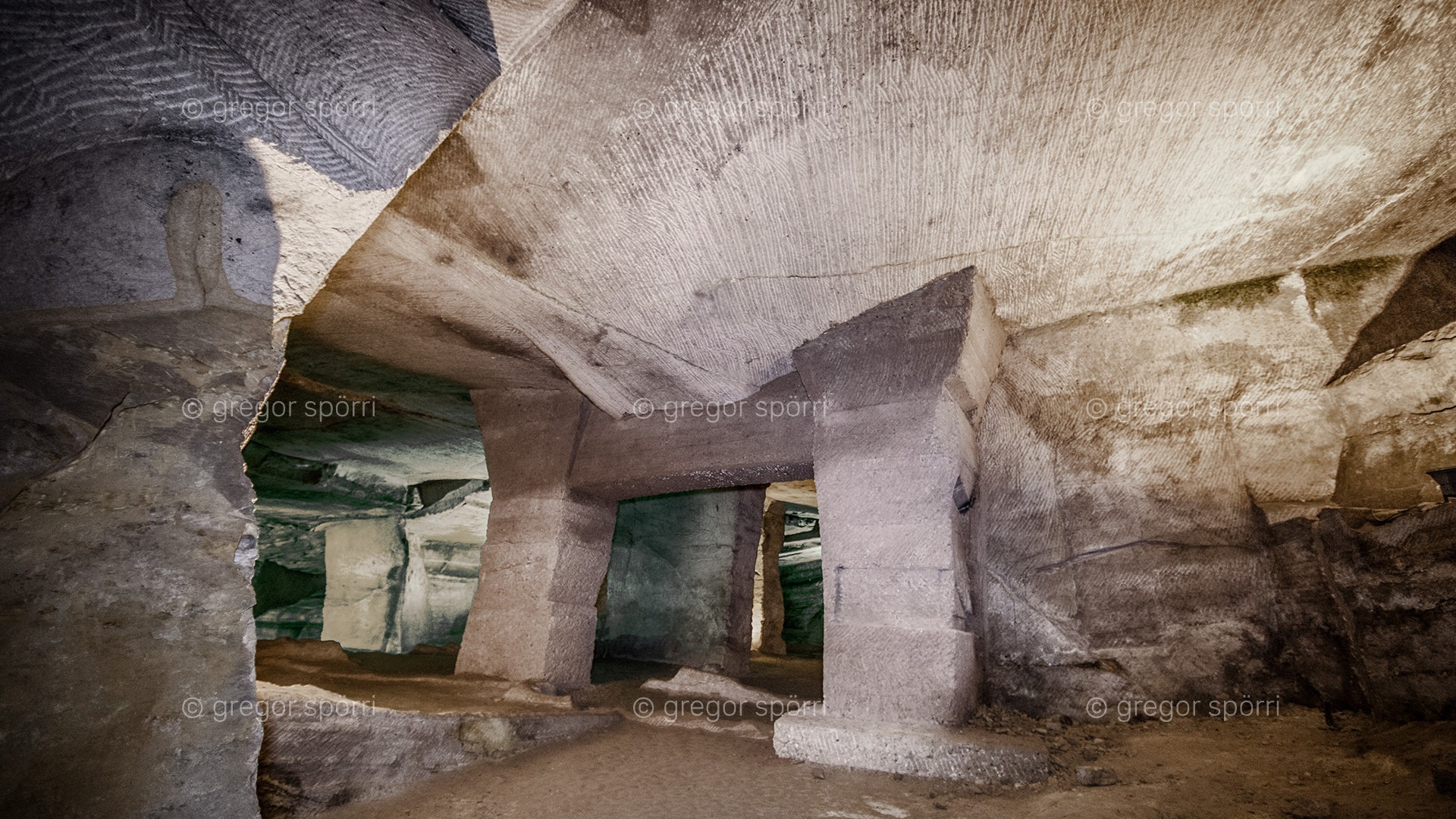

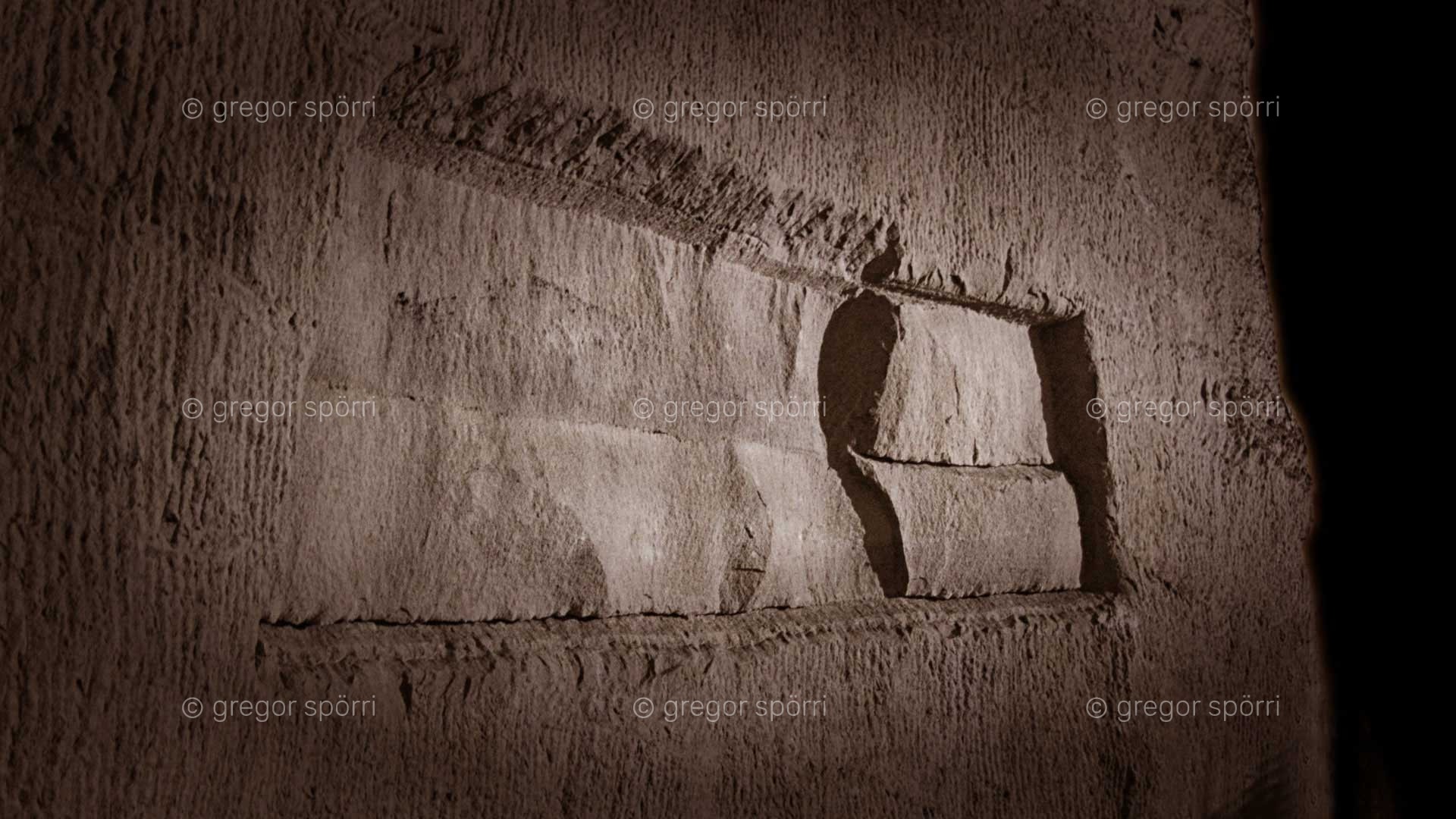
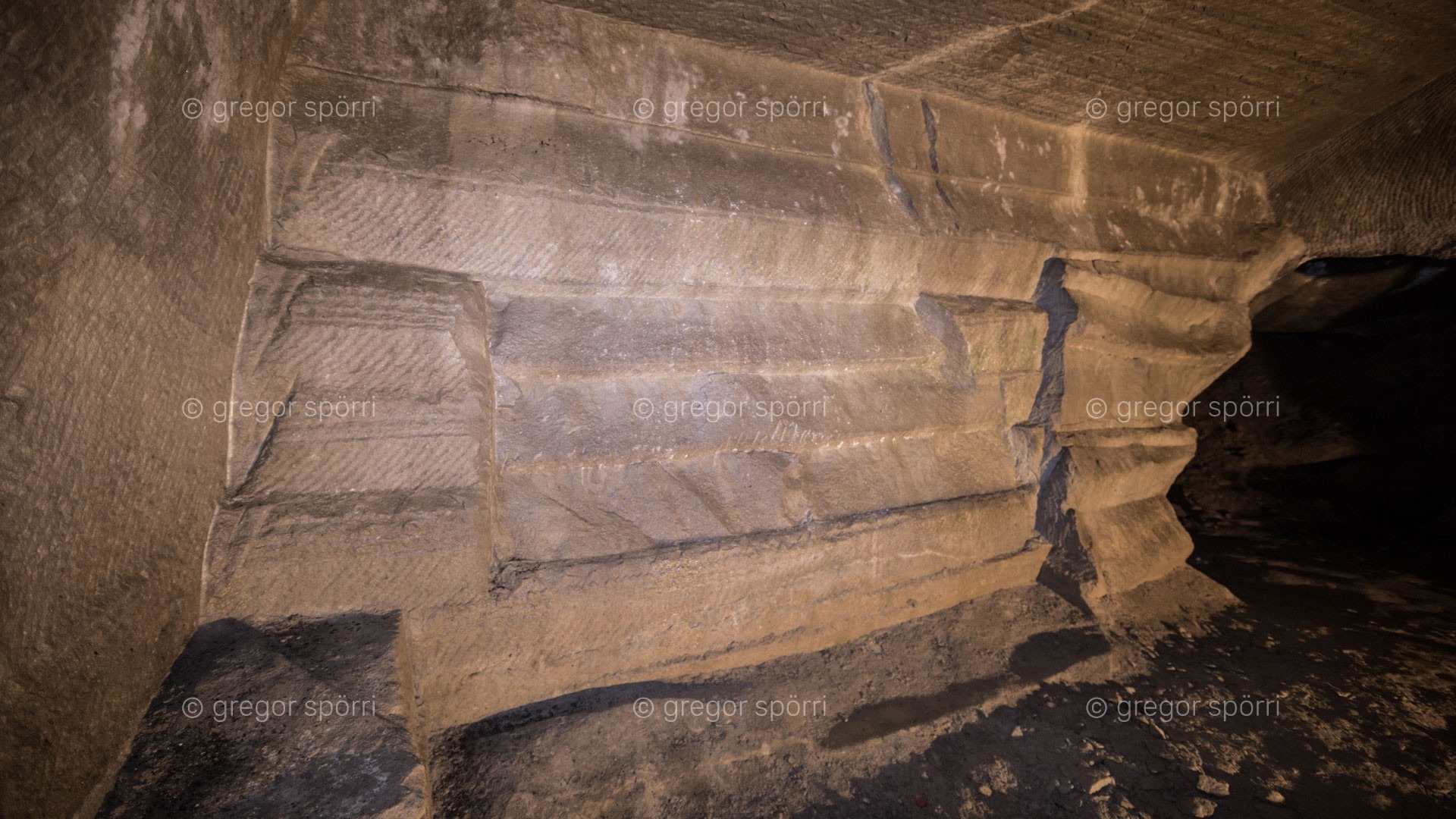
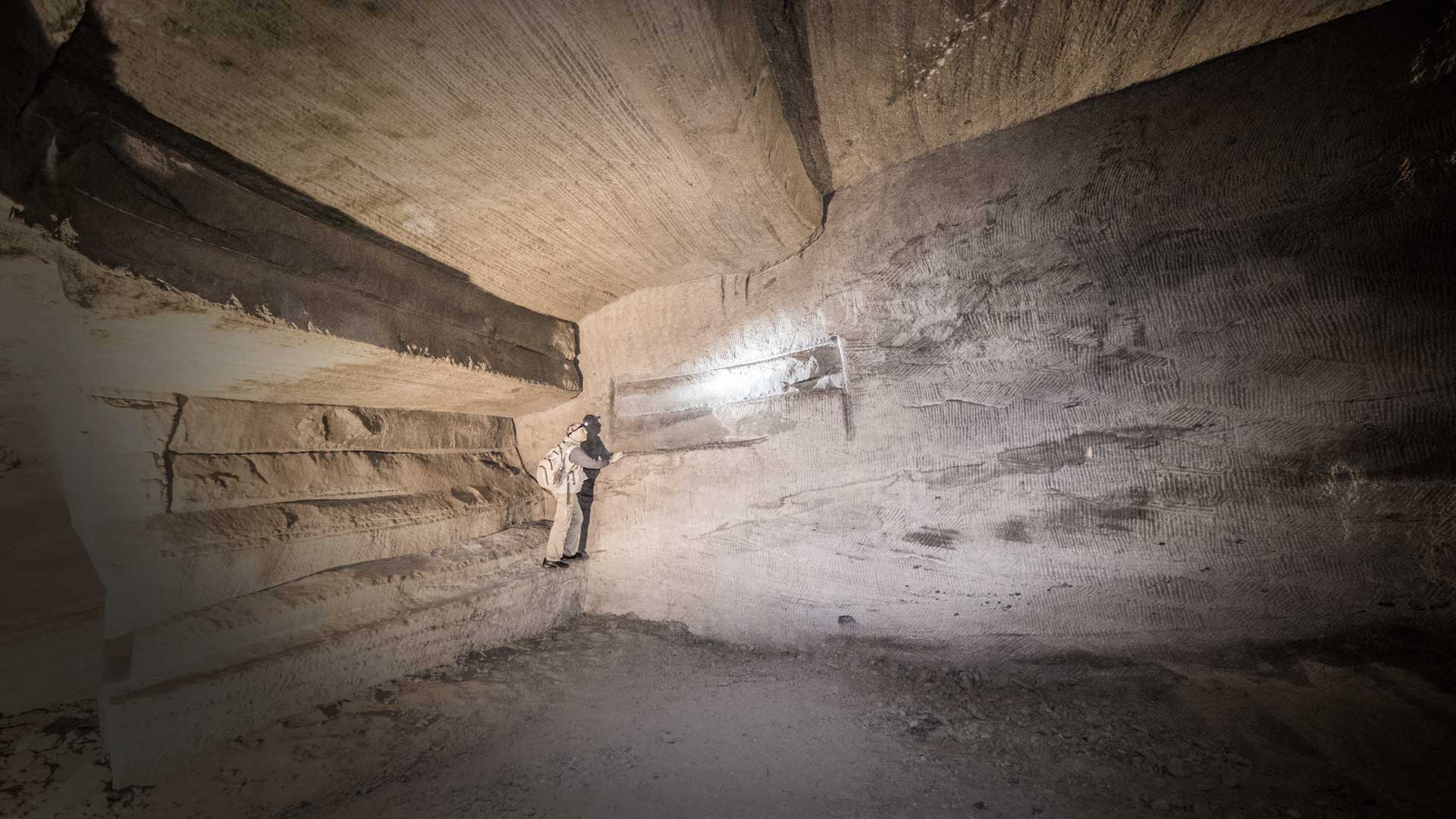
Stone Age high technology?
On closer inspection of the walls and ceilings, everything that has already been seen and described becomes even more puzzling. These walls and ceilings are adorned with hundreds of meters of ornamental patterns that are so precisely crafted that one cannot help but assume that the builders of the grottoes were at work with modern milling machines.
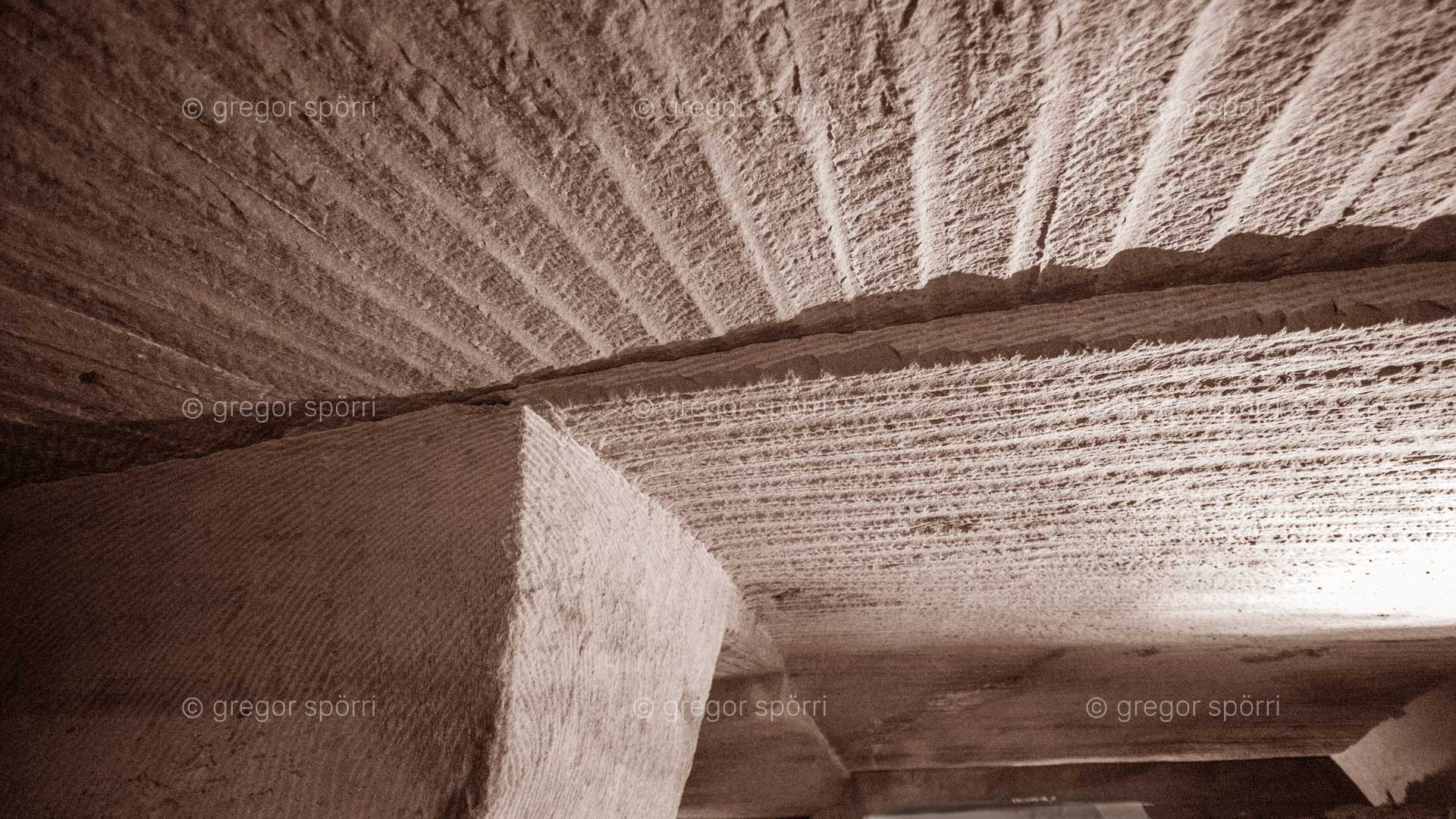
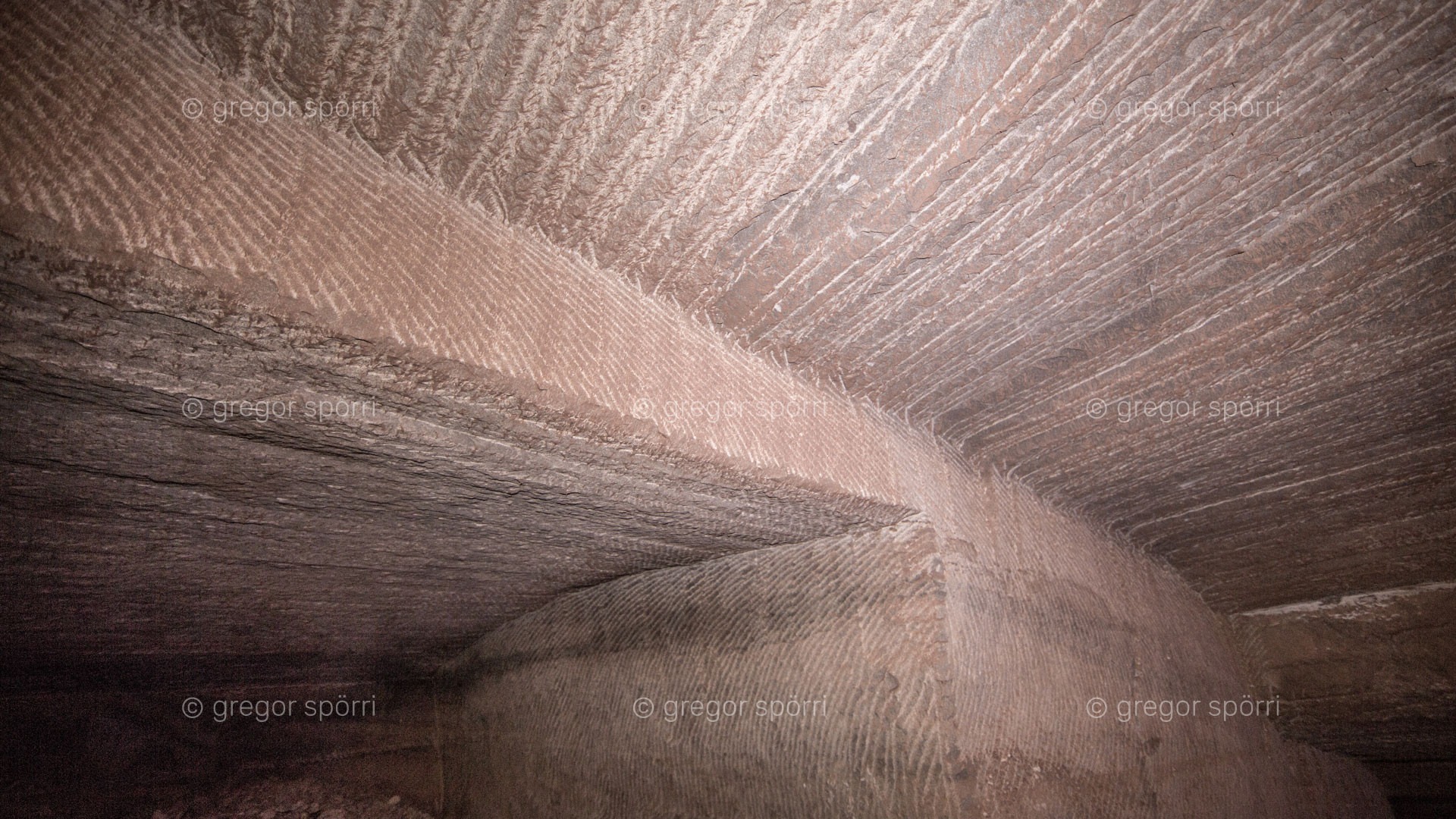
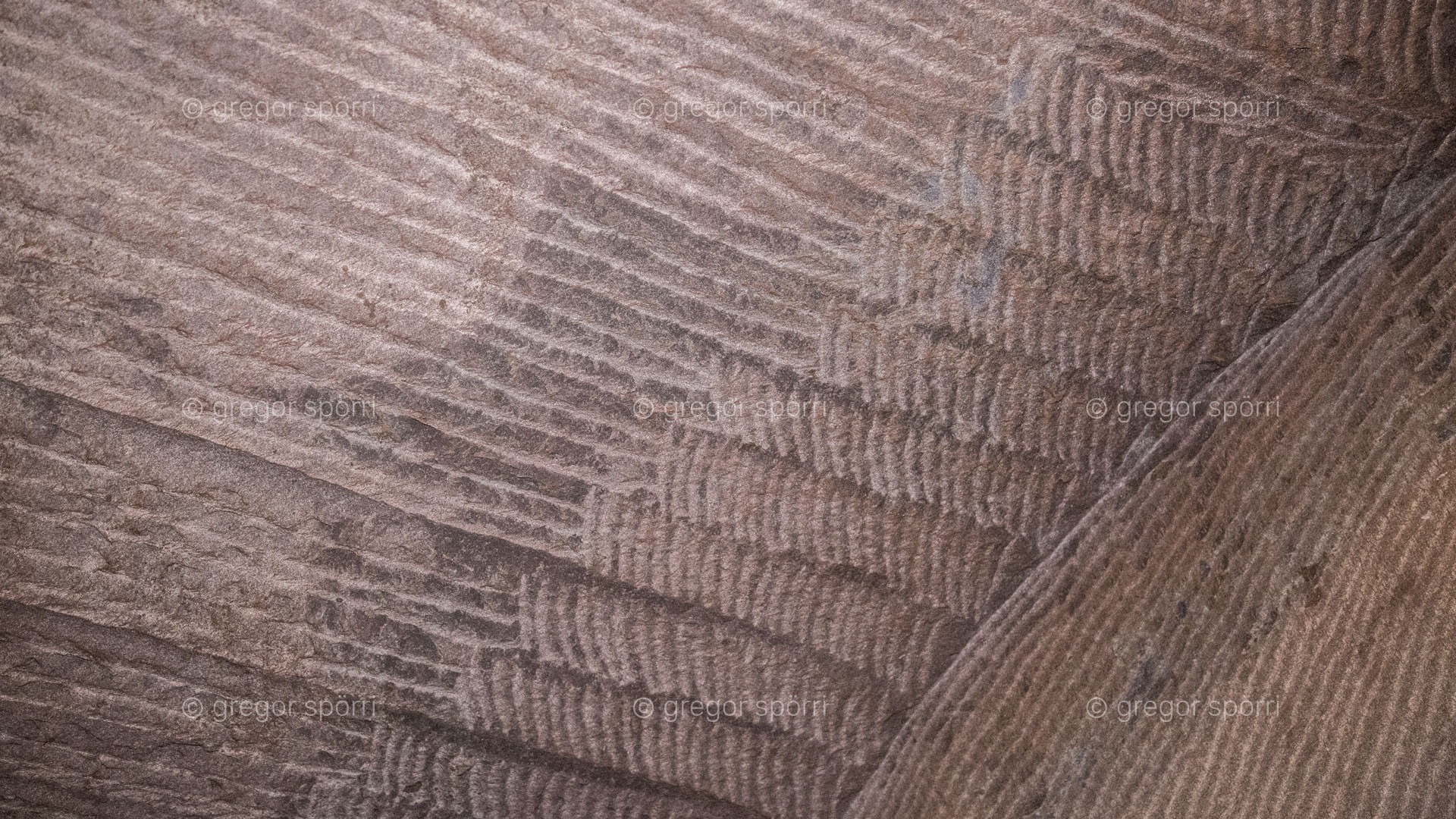
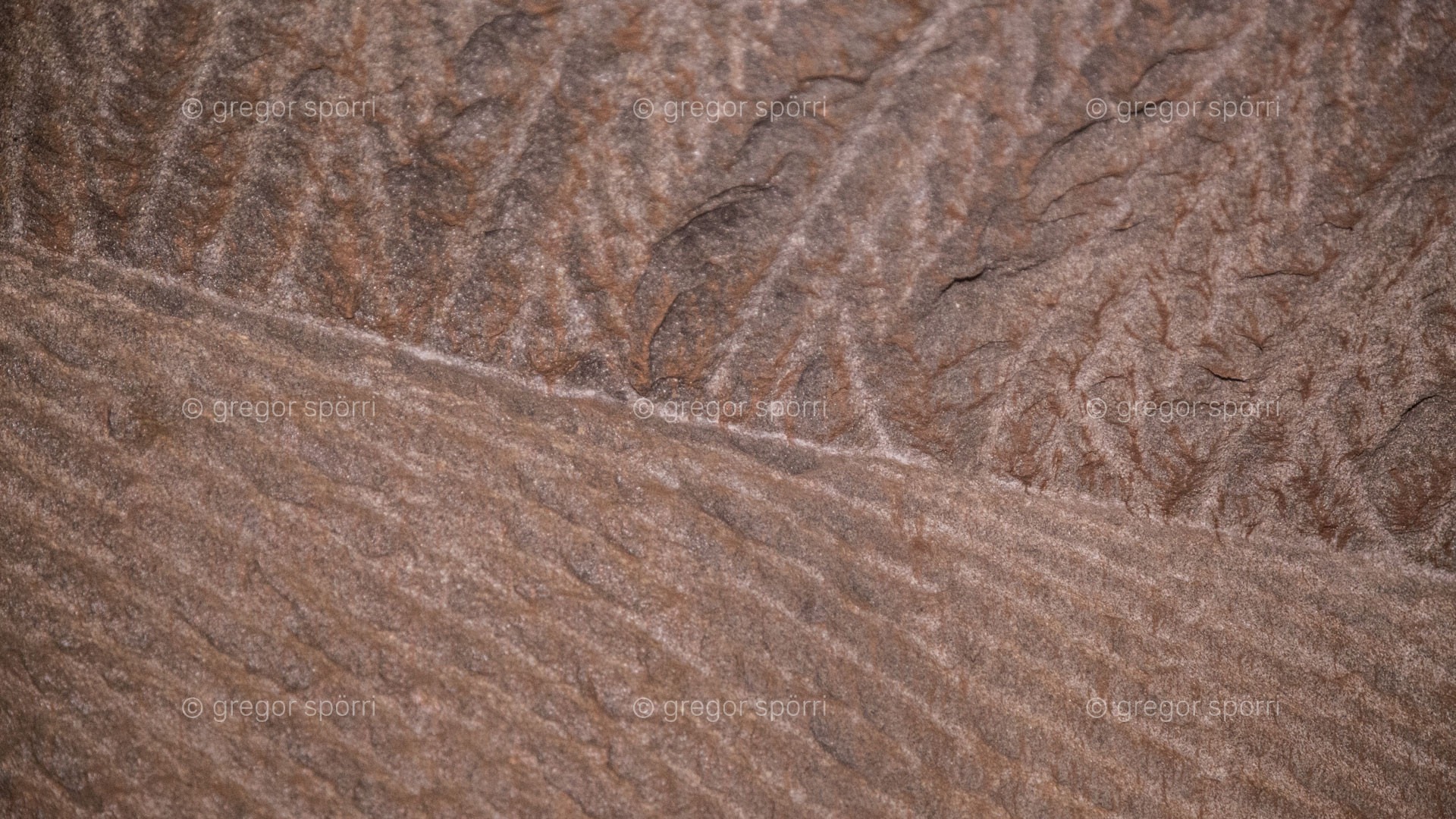
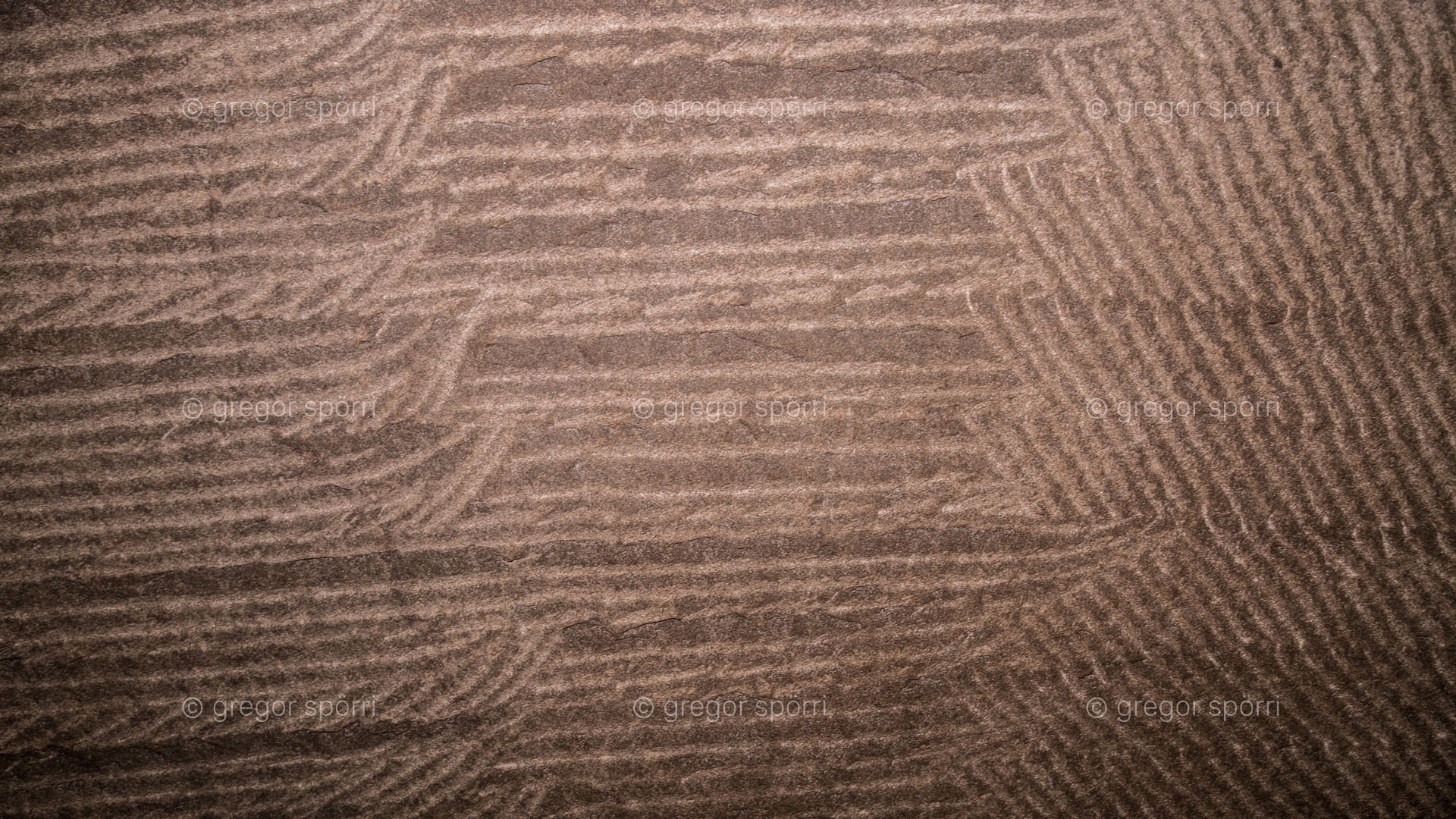
The theses of Chinese scientists and experts
To this day, there is no explanation for the existence of the gigantic facilities. The Chinese researchers are therefore left to puzzle and develop various hypotheses. Here is a selection:
The quarry thesis
The ancient Chinese dug these caves to build their houses with the stones taken from the mountain. Ships were then used to transport the stones down the nearby Xin’an River.
My objections to this
1) It would have been much easier to extract the stones for building houses from open-cast mines.
2) Although a good 200,000 cubic meters of rock were extracted from the mountain, which corresponds to around 5,500 open freight wagons, not a single house has been found to date that was built from the unmistakable mottled rock of the Blumenberg.
3) When the stones were cut out of the mountain, the water level must have been a good 30 meters lower than it is today. The Xin’an, not a deep river even at the current water level, can at best have been a small stream at that time. The idea of transporting the stones away by ship is therefore a virtual non-starter.
4) The relatively small and complicated entrances to the grottoes, their bizarre design and the finely worked details and decorative patterns on the ceilings, walls and columns contradict the quarry thesis.
The deposit thesis
The caves were once used as storage facilities for the military. Chinese historiography records that there was a major peasant uprising in the area around 1120.
My objections to this
1) Based on the length of naturally grown stalactites, Chinese researchers have calculated that the caves must have been built before the year 300, a good 800 years before the peasant uprising.
2) As with the quarry thesis, the finely worked details and decorative patterns on the ceilings, walls and columns are in complete contradiction to this.
The temple thesis
The caves were once used by Buddhist monks as temples for their religious purposes and rites.
My objections to this
1) The caves lack the typical depictions of Buddhist deities. There are neither wall paintings nor carvings.
2) The complex is far too huge for one or even several temples. There are no comparable buildings or facilities anywhere in the world.
3) It is illogical for monks to retreat into dark caverns deep inside a mountain to meditate. My inquiries with Buddhist monks confirm this objection.
The mausoleum thesis
The caves were built as an imperial mausoleum. An old Chinese proverb says: “It is an honor to live in Suzhou, die in Liuzhou and be buried in Huizhou (Huangshan).
My objections to this
1) The Chinese have always been fond of writing and recording. If imperial families were actually responsible for this magnificent work, there would certainly be historical records of it.
2) As with the temple thesis, the whole complex is far too huge for a mausoleum.
The shelter thesis
The caves were created by an ancient civilization as a shelter from a cosmic catastrophe. Apparently they were unsuccessful, as there are no records, legends or tales about them.
This thesis is supportedby
There are numerous ancient underground caves and complexes around the world, but no one knows who built them, when and for what purpose. A looming global catastrophe could well have been a trigger for extraordinary construction projects like this one.
This thesis is contradictedby
The time-consuming and labor-intensive interior design of the rooms, which is completely unnecessary for this purpose, again speaks against the shelter thesis.
The multigenerational thesis
The caves are not the project of a single dynasty or period. They were created over hundreds or thousands of years and served a wide variety of purposes over generations.
This thesis is supportedby
The quality of workmanship in the design of the rooms varies greatly. Different expansion stages would be a good explanation for the discrepancies. There are also up to 21 different decorative patterns on the ceilings, walls, columns, pits, etc.
This thesis is contradictedby
The various decorative patterns are sometimes very close together or even overlap. From this it can be deduced that the decorations must have been created at the same time or at least close to each other. For example, there are rectangular pits or burial niches in which a maximum of two people could work without getting in each other’s way. Nevertheless, these walls are provided with different decorative patterns.
More puzzles
1) In grotto no. 35 there is a 450 square meter ceiling with a 45 degree slope. Using infrared rays, researchers discovered that the wall has the same angle as the mountain flank. It was also determined that the thickness of the rock between the wall and the mountain flank is just under five meters. How on earth could Stone Age workers know exactly where they were in the mountain? What equipment did they use to calculate the angle of the wall in relation to the mountain flank?
2) No traces of soot or other signs of light produced by fire were discovered in the caves. So how could this huge facility be built deep in the mountain and in complete darkness without adequate lighting?
Further considerations and questions
There are structures and artificial cave systems all over the world that are up to 35 meters under water. When these buildings were erected, the sea level must have been 30 to 35 meters lower than it is today. So which periods are suitable for this?
The last ice age began around 110,000 years ago and ended around 12,000 years ago. During the 100,000 year-long cold period, there was a massive climate change. This was associated with, among other things, extensive glaciation and a significant drop in sea level. The subsequent post-glacial thawing and warming period, in which we still find ourselves today, therefore began around 12,000 years ago. This was and is also associated with the constant rise in sea levels.
Conclusion
Buildings that today lie around 30 meters deep under water must (tectonic shifts excluded) be around 10,000 years old, because they could not have been built in more recent times. According to this simple but compelling logic, the Huang Shan caves also date back to a time before the “biblical Flood”.
But what kind of people lived at that time? According to official historiography, they were Stone Age people without the necessary knowledge and tools.
So who could have built these and many other antediluvian marvels around the world?
Open-minded Chinese scientists
Some Chinese researchers are open to the hitherto highly controversial paleo-SETI theory. According to them, the caves were built in prehistoric times with the help of travelers from outer space. At the entrance to the grottoes, this possibility is pointed out without false shame.
Back to Mystery research
